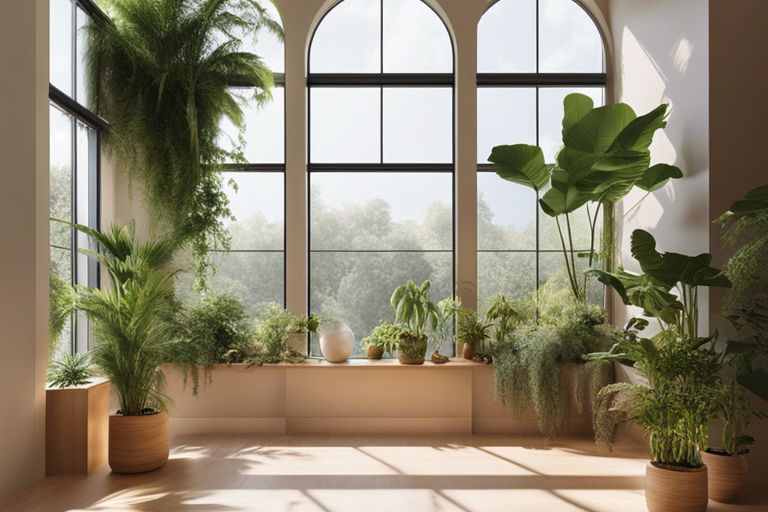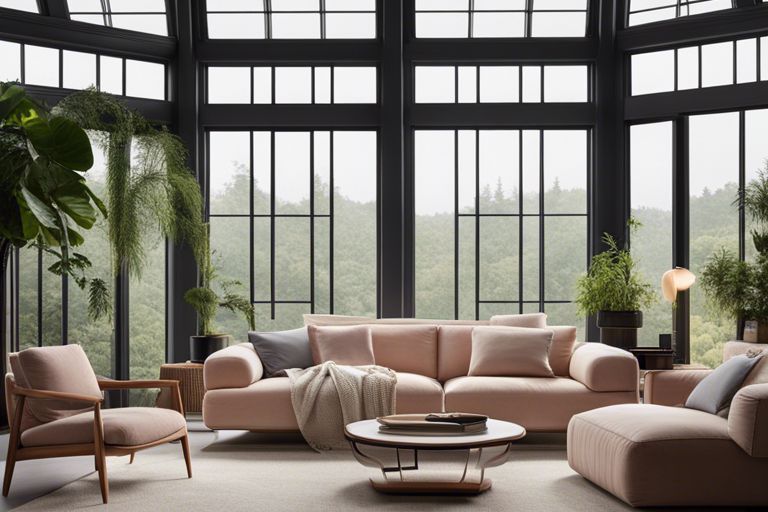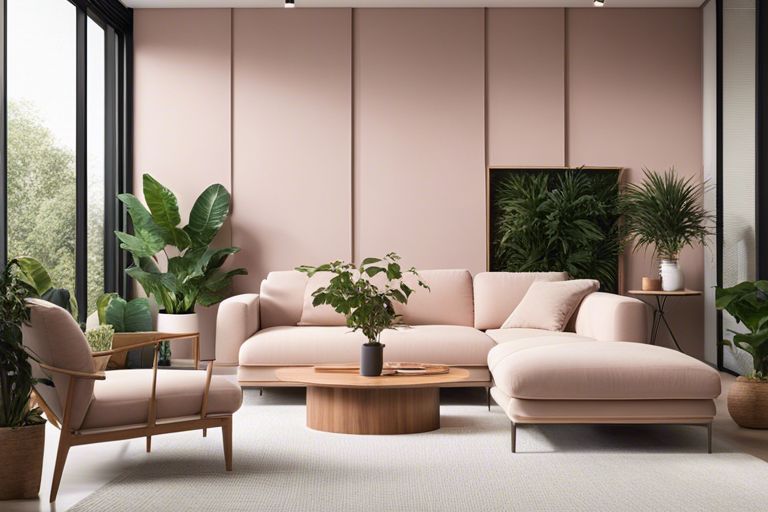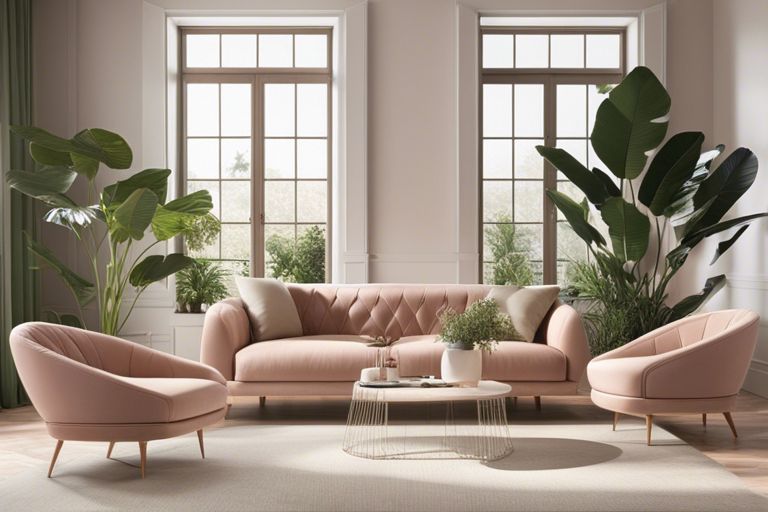There’s a certain magic that happens when light floods into a space, creating a connection to nature and enhancing our well-being. In this informative guide, we will explore the art of implementing passive design strategies to maximize natural light and create biophilic spaces that blur the lines between indoor and outdoor environments. Discover how architects, designers, and builders can harness the power of light to create sustainable and harmonious spaces that prioritize our connection to nature.
Key Takeaways:
- Passive Design: Implementing passive design strategies can help maximize natural light, minimize energy consumption, and create comfortable, sustainable biophilic spaces.
- Biophilic Spaces: Incorporating biophilic design elements such as natural light, ventilation, greenery, and natural materials can improve occupant well-being, productivity, and connection to nature.
- Importance of Light: Letting natural light into a space not only reduces the need for artificial lighting but also enhances the overall aesthetics, mood, and functionality of the space, promoting a healthier and happier environment.
The Power of Natural Light
Before submerging into the specifics of how to implement passive design strategies, it is crucial to understand the power of natural light in creating biophilic spaces. Natural light is not only visually appealing but also plays a significant role in the overall well-being of occupants. Harnessing daylight effectively can enhance energy efficiency, human health, and the overall aesthetics of a space.
Harnessing Daylight for Energy Efficiency
Natural light is a valuable resource that can be utilized to reduce energy consumption in buildings. By strategically placing windows, skylights, and other openings in a space, you can maximize natural light penetration, thus reducing the need for artificial lighting during the day. This not only saves energy but also creates a more comfortable and visually pleasing environment for occupants.
The Impact of Natural Light on Human Health
On a physiological level, exposure to natural light has a profound impact on your health and well-being. Natural light helps regulate your circadian rhythm, which in turn affects your sleep patterns, mood, and overall productivity. Understanding the importance of natural light in your daily life can inspire you to design spaces that prioritize access to daylight for your own benefit.
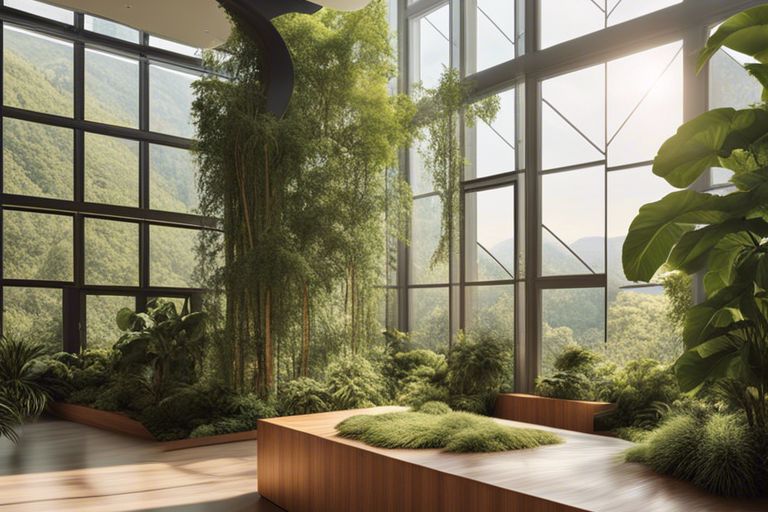
Principles of Passive Design
Little did you know that implementing passive design strategies can significantly enhance the comfort, energy efficiency, and connection to nature within a building. By incorporating principles of passive design, you can create biophilic spaces that not only look beautiful but also function efficiently.
Orientation and Layout Strategies
For optimal performance, your building should be oriented to make the most of natural light and ventilation. By strategically placing windows, doors, and outdoor living spaces, you can maximize the benefits of daylight and fresh air, creating a healthy and inviting indoor environment. Additionally, thoughtful layout design can promote natural airflow and create spaces that seamlessly blend with the surrounding nature, enhancing occupants’ overall well-being.
Insulation and Thermal Mass Techniques
Strategies such as proper insulation and thermal mass utilization play a crucial role in regulating indoor temperatures and reducing energy consumption. Insulation helps trap heat in winter and keeps it out in summer, while thermal mass materials like concrete or stone can absorb and store heat, stabilizing indoor temperatures throughout the day. By combining these techniques effectively, you can create a comfortable and energy-efficient space that aligns with biophilic design principles.
Understanding the principles of passive design and incorporating them into your projects is crucial to creating sustainable, biophilic spaces that prioritize human well-being and environmental health. By focusing on aspects such as orientation, layout, insulation, and thermal mass, you can design buildings that not only let the light in but also foster a deep connection to nature while promoting energy efficiency.
Biophilic Design Elements
After reading the article on Biophilic Lighting Design: Crafting Therapeutic and Calming Spaces, you are already familiar with the calming and therapeutic benefits of incorporating nature-inspired elements into your designs. In the context of biophilic design, there are various elements you can integrate to create spaces that not only look aesthetically pleasing but also promote well-being and productivity.
Incorporating Vegetation in Buildings
For a truly biophilic space, introducing vegetation into the built environment is key. Plants not only add a natural element to your design but also improve air quality, reduce stress, and enhance concentration. Consider incorporating living walls, green roofs, or strategically placing potted plants throughout the space. By bringing nature indoors, you can create a harmonious environment that reconnects you with the outdoors.
Water Features and Acoustic Design
Water features, such as fountains or indoor ponds, can add a sense of tranquility and visual interest to a space. The sound of flowing water has a calming effect, masking unwanted noise and promoting relaxation. In addition to water features, acoustic design plays a crucial role in creating biophilic spaces. By using materials that absorb sound and reduce reverberation, you can enhance the overall sense of well-being in the environment.
Understanding the importance of these biophilic design elements and how they contribute to overall wellness and productivity is imperative for creating spaces that not only look beautiful but also support the well-being of the occupants. Whether you are designing a residential space, an office, or a public building, incorporating elements inspired by nature can have a profound impact on the occupants’ physical and mental health.
Material Selection for Biophilic Spaces
Unlike traditional design where materials are chosen purely for aesthetic appeal and function, biophilic spaces require thoughtful consideration of the materials used to enhance the connection with nature. The selection of materials plays a crucial role in creating a harmonious and sustainable environment that aligns with the principles of biophilic design.
Sustainable and Recyclable Materials
Spaces that embrace biophilic design principles prioritize the use of sustainable and recyclable materials to reduce environmental impact. Incorporating materials such as reclaimed wood, bamboo, cork, and recycled glass not only adds a natural element to the space but also contributes to a healthier ecosystem. By choosing materials that can be recycled or have a low carbon footprint, you are actively participating in the preservation of the environment for future generations.
Natural Materials and Textures
Biophilic design celebrates the beauty and authenticity of natural materials and textures like stone, marble, leather, and wool. These materials evoke a sense of tranquility and connection to the natural world, enhancing the overall well-being of occupants. By integrating these natural elements into your design, you create a sensory experience that engages all the senses, fostering a deeper connection with nature.
Understanding the impact of natural materials and textures on the built environment is imperative for creating biophilic spaces that promote health and well-being. The use of natural materials not only enhances the visual appeal of a space but also has positive effects on air quality, acoustics, and overall occupant comfort. By prioritizing the incorporation of natural elements in your designs, you can create healthier and more sustainable environments that harmonize with nature.
Climate-Responsive Design
Despite the ever-changing climate conditions around the world, implementing passive design strategies that respond to local climates and conditions can significantly enhance the comfort and efficiency of biophilic spaces. Adapting to Local Climates and Conditions is crucial in creating sustainable and harmonious environments that connect occupants with nature while optimizing energy consumption.
Adapting to Local Climates and Conditions
For climate-responsive design, understanding the specific climate of the location where you are designing is crucial. By adapting to local climates and conditions, you can tailor your design to maximize natural ventilation, daylight, and thermal comfort. This approach not only minimizes the reliance on mechanical cooling and heating systems but also creates a more resilient and adaptable built environment.
Using Shading Devices and Overhangs
Using shading devices and overhangs is a key strategy in passive design to control solar gain and glare, especially in warm and sunny climates. Using shading devices and overhangs effectively can help reduce energy consumption by minimizing the need for artificial cooling while ensuring a comfortable indoor environment.
Climate-responsive design strategies like using shading devices and overhangs play a vital role in optimizing daylight penetration and natural ventilation while protecting the interior from overheating. By incorporating these elements into your design, you can create biophilic spaces that not only embrace natural light but also foster a deeper connection to the outdoor environment.
Implementing Passive Design Strategies
Your journey to creating biophilic spaces through passive design strategies will be a collaborative effort between architects and engineers. An open line of communication and a shared understanding of the project goals will be crucial for success.
Collaboration Between Architects and Engineers
An interdisciplinary approach is vital when it comes to implementing passive design strategies. Architects bring the vision and aesthetics to the table, while engineers provide the technical expertise to ensure the design functions the way it was intended.
Balancing Aesthetics and Functionality
Aesthetics play a significant role in biophilic design, but it’s vital to find a balance with functionality. With careful consideration, you can create spaces that are not only visually appealing but also comfortable and sustainable for occupants.
Final Words
Conclusively, by implementing passive design strategies for biophilic spaces, you are not only creating aesthetically pleasing environments but also promoting health and well-being. Letting the light in and incorporating natural elements into your designs can have a profound impact on the occupants, fostering a connection to nature and enhancing the overall quality of the space. As you continue to explore and implement biophilic design principles, remember the importance of creating spaces that not only look beautiful but also support the well-being of those who inhabit them.
FAQ
Q: What is biophilic design?
A: Biophilic design is an innovative approach that incorporates nature and natural elements into the built environment to create spaces that enhance the well-being and connection of occupants to the natural world.
Q: How can passive design strategies be implemented in biophilic spaces?
A: Passive design strategies can be implemented in biophilic spaces by utilizing natural elements such as daylight, natural ventilation, and thermal mass to reduce the need for mechanical heating, cooling, and lighting, thus creating sustainable and healthy environments.
Q: Why is it important to let light into biophilic spaces?
A: Allowing natural light to penetrate biophilic spaces not only reduces the reliance on artificial lighting but also enhances the connection to the outdoors, promotes circadian rhythms, and improves the overall health and well-being of occupants by creating a bright and uplifting environment.
